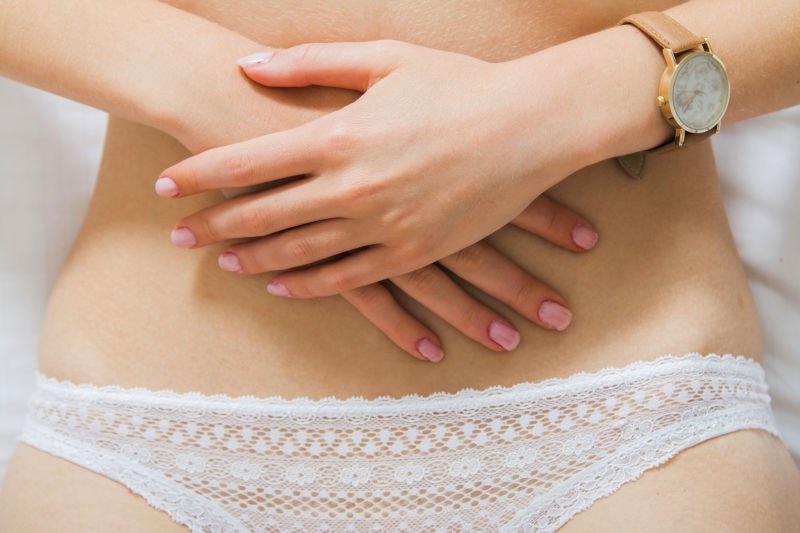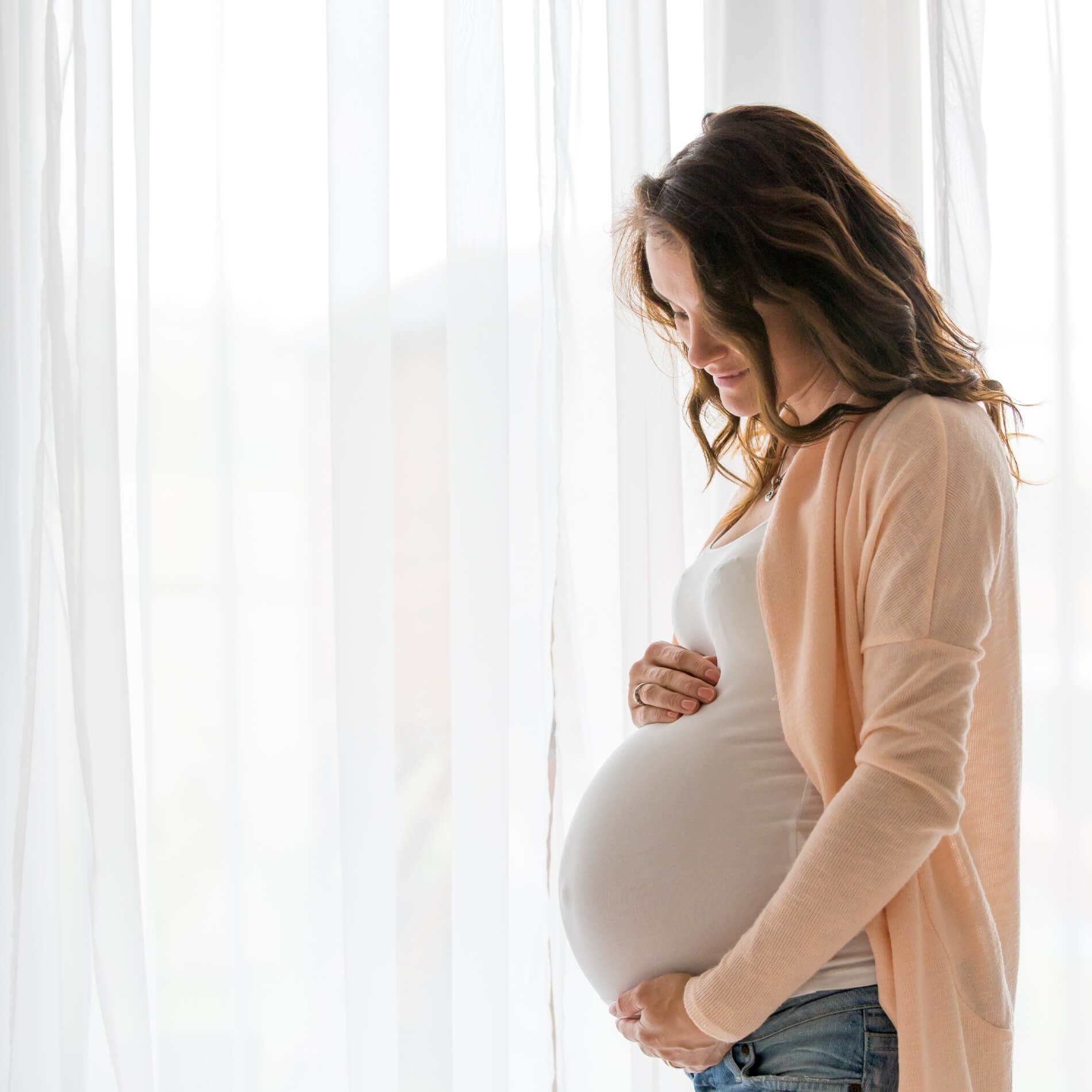All About Your Vaginal Flora
If you have a vagina, you need to read this!
Thankfully, as a society, we are becoming much better at talking about vaginas and intimate health. In this article, you will find out more about the vagina and the bacteria that live there. You will learn how to protect the delicate vaginal microbiome to keep your vagina healthy.
In this article, we look at:
- So, what is vaginal flora?
- The importance of the vaginal microbiome
- Women's vaginal health - the different life stages
- Triggers for vaginal imbalance and infections
- What is a vaginal microbiome transplant?
If you’re short on time, you may wish to skip to the key take-aways:
- Key Take-aways for a healthy vagina - How to keep your vagina happy and healthy
So, what is vaginal flora?
The vaginal flora, also known as the vaginal microbiome, is the collective term for the colonies of bacteria that live inside the vagina. A healthy, balanced vaginal flora is incredibly important for intimate health. Just like the gut, the vagina is home to billions of bacteria and other microorganisms; some good, some bad, and some ‘neutral’.
The types of bacteria found in the vaginal microflora will vary from individual to individual, but a healthy vaginal microbiome is made up mostly by a genus of bacteria called Lactobacillus. In fact, it is estimated that at least 95% of the average vaginal flora should be made up from the Lactobacillus genera of bacteria and predominantly the following species:
- Lactobacillus reuteri
- Lactobacillus rhamnosus
- Lactobacillus crispatus
- Lactobacillus gasseri
- Lactobacillus iners
- Lactobacillus jensenii
Transgender men with vaginas undergoing hormone therapy will continue to have Lactobacillus present in the vaginal microbiome, though this is less likely to be the predominant genus and there is likely to be a greater microbial diversity in the trans vagina1. Research into the trans microbiome is still in its infancy, however, and the vast majority of clinical trials have been conducted in cis women.
Not all the strains (types) within each of these genera and species of bacteria will be resident in the vagina. Some strains may prefer to live in the gut. Bacteria are classified according to their genus, species, and strain. Strains within each species may have very different properties, and therefore ‘live’ in different areas of the body.
Read more about the importance of strains in this article: Are all strains of bacteria the same?
For example, we know that some strains of Lactobacillus reuteri and Lactobacillus rhamnosus prefer to live in the gut, whereas the Lactobacillus rhamnosus GR-1®, Lactobacillus reuteri RC-14® and Lactobacillus paracasei F-19® strains prefer to live in the vagina. These, and the other strains of probiotic bacteria in the vaginal flora, work very hard to protect you against vaginal infection.
Health professionals can read more about the Lactobacillus genus over on the Probiotics Database, along with the studies on these strains: Lactobacillus rhamnosus GR-1® and Lactobacillus reuteri RC-14®.
The importance of the vaginal microbiome
So how do friendly bacteria protect against vaginal infection? Let’s take a look.
- Production of lactic acid. This function is what keeps the vagina's pH balance at a slightly acidic level and prevents the growth of yeast, bad bacteria and other pathogenic organisms which prefer a more alkaline environment9. It is this function is why Lactobacilli have their name. Fun fact: the pH balance of a healthy vagina is around 4.5, which is the same as wine, tomatoes, and beer!
- Production of hydrogen peroxide and other substances which inhibit the growth of unfavourable or ‘pathogenic’ strains of bacteria and yeast10. Anything that upsets the delicate balance of the vaginal microbiome gives pathogens a chance to overgrow and cause intimate health infections.
Bad bacteria can grow in the vaginal flora for many reasons. Sexual intercourse, high-sugar diets, the use of perfumed body wash products, antibiotics and even stress are known as potential triggers - read on to find out more about these triggers below. If the vaginal microbiome is disrupted and vaginal pH levels exceed 4.5, it becomes the ideal breeding ground for infections such as:
- Bacterial vaginosis (BV) - BV is the most common vaginal infection in those ages 15-44, with one in three individuals with a vagina thought to suffer from it at some time in their lives. Read this article to find out more about probiotics and bacterial vaginosis.
- Yeast infections, also known as thrush. These are typically caused by unfriendly yeasts from the Candida family. Health professionals can head on over to the Probiotic Professionals site to read more about how to support Candida overgrowth and probiotics for thrush
Women's vaginal health - the different life stages
Your vagina contains more bacteria than anywhere else in your body, after the bowel. Everyone’s vaginal microbiome is different and changes during our life as hormonal shifts occur which can disrupt the harmonious balance of good and bad bacteria in the vagina.
Birth and childhood
At birth, our vaginas are sterile. Shortly after or during birth, the baby's vaginal microbiome starts to populate when they take on bacteria from their mother, typically from the Bifidobacteria genus. During early childhood, the vaginal pH is neutral or only slightly alkaline. From this point up until mid-childhood, there is a decrease in populations of Lactobacillus and pre-pubescent individuals, have lower populations of Lactobacillus species in proportion to the other species.
Top tip for parents: vaginal infections can arise in pre-pubescent children, often due to highly scented bath products. Encourage your little ones to wipe themselves from front to back when going to the loo. Also don’t use perfumed soaps, especially directly into the vaginal area.
Puberty
The teenage years are a challenging time for young people with their bodies changing as they enter puberty. There are also big changes in the vaginal microbiome at this time. Ever-increasing levels of oestrogen result in high levels of glycogen to be present in the vaginal lining. The Lactobacillus family of bacteria ferment glycogen resulting in the production of lactic acid. This helps to protect the vagina at this challenging time.
The reproductive years and pregnancy
Once we have transitioned through puberty we reach reproductive years. Sexual activity may follow and with it and the chance of pregnancy. During pregnancy, the vaginal flora shifts and becomes even more dominant in Lactobacilli. It is thought that this increased dominance of Lactobacilli is to safeguard against infection which can be triggered at this vulnerable time, due to the hormonal shifts. Read more about pregnancy and the vaginal microflora.
Those who have monthly menses may find that they are more prone to vaginal infections just before or around the time of their period. Again, this is triggered by hormonal shifts at this time.

Menopause and beyond
The cessation of monthly periods is only one change that occurs at menopause. Due to a drop in sex hormones, especially oestrogen, vaginal dryness or atrophy may become an issue post-menopause. A reduction in vaginal glycogen leads to a reduction in protective Lactobacilli, so post-menopausal individuals are at increased risk of vaginal infections and UTIs, such as cystitis.
Triggers for vaginal imbalance and infections
What are triggers for vaginal infections and how do they disrupt the populations of good vaginal bacteria.
Menstruation
Our periods can be a monthly challenge for the vagina. The hormonal fluctuations and onset of the menstrual cycle can disrupt the balance of the vaginal flora, sometimes acting as a trigger for infections like BV. It is common for the vaginal microbiome to be disrupted during the first week of the menstrual cycle. However, it’s not clear whether this is due to the menstrual flow itself or hormonal changes2.
Bacteria levels change during menstrual flow: the pH rises and Lactobacillus bacteria decrease. At the same time, there is an increase in numbers of other bacteria normally present in the vaginal microbiome too. When our menstrual flow stops, pH decreases again and the numbers of Lactobacilli increase. This reinstates the usual balance and is consistent from cycle to cycle.
Sex
The benefits of a healthy sex life are far-reaching including:
- lowering blood pressure
- supporting brain, immune & heart health
- reducing stress and increasing sleep quality
- improving our self-esteem
- deepening the bond with our partner
However, it's important to consider that unprotected sex may result in the introduction of new micro-organisms into the vagina which could result in an immune response against the bacteria, causing inflammation3.
When the Lactobacillus population of bacteria is disrupted, these less desirable bacteria take over and leave us vulnerable to infections.
The use of sexual lubricants during sex can also be problematic for the vaginal flora. Some of the ingredients used in these products may increase the likelihood of intimate health infections. Particular ‘nasties’ to avoid include: any flavourings or scents (as these often contain sugar which promotes yeast infections, such as thrush), glycerine and glycerol (as both can damage and dehydrate the vaginal epithelia) and spermicides, to immobilise sperm and prevent pregnancy, (this may also increase the likelihood of vaginal infections)
One particular spermicide, Nonoxynol-9 (N-9) has been proven in clinical trials4 to damage vaginal tissue and increase the transmission of STIs, including HIV.
Try to use a natural lubricant instead, and check the pH value of the product. Products should have a similar pH to the vagina itself, of around 3.8-4.5. There are plenty of good natural options on the market now.
It is also a good idea to use protection, particularly with new sexual partners.
However, having plenty of good bacteria in the vaginal flora can help create a healthy defence against sexually transmitted infections5, such as chlamydia.
Hygiene
Good hygiene is key for intimate health but do we need highly perfumed bath and shower products? What about piercings and hair removal?
- Harsh soaps can disrupt our balance of vaginal flora. In fact, the vagina is designed to keep itself clean with the help of natural secretions (discharge), so vaginal health doesn’t require the use of strong products. Warm water and some optional unscented soap are recommended for cleaning your vulva effectively – the vagina is self-cleaning so internal douching shouldn’t be necessary.
How do you know you're doing it right? A healthy vagina should not smell offensive but may have a natural odour.
Other practices like depilation or intimate piercings may contribute to the modification of the delicate vaginal microbial balance6. It is important to take proper care of the affected area during the healing period, which is around 1-2 days for hair removal and up to a year for piercings, dependent on the specific piercing site. Your piercing or waxing professional will be able to offer you detailed instructions on the necessary aftercare to help avoid infection.
Pregnancy
During pregnancy, there are changes to the vaginal microbiome but what are the changes and why do they happen?
- What? there is a significant decrease in overall microbial diversity with a marked enrichment of the Lactobacillus species7.
- Why? This is thought to possibly help protect against infections during pregnancy.
Our vaginal flora increases massively with amounts of Bifidobacterium, too. Both Lactobacillus and Bifidobacterium crowd out other bacteria species, preventing harmful bacteria from going up into the womb where they could infect the amniotic fluid, placenta and baby.
During birth, the first bacteria to arrive in the baby’s gut come from our vaginal microbiome helping to protect against harmful bacteria taking hold. This sets up our babies' own microbiomes.
If you're interested in finding out more about this fascinating topic, take a look at the articles below:
Do babies come into contact with bacteria in the womb?
Microbirth: Film highlights importance of a vaginal birth for babies' microbiome
Stress
Stress can also disrupt the microbiome, both in the gut and the vagina8. The "fight-or-flight" response that we experience when under stress may be harmful to the vaginal flora, especially if the stress persists on a long-term basis.
Here's the science bit: prolonged exposure to stressful situations can stimulate the production of cortisol, which will affect levels of glycogen in the vagina, and consequently the populations of Lactobacilli which like to ferment it. A reduction in levels of Lactobacilli can increase the risk of vaginal infections.
Healthcare professionals may wish to read more about stress in our blog: Could probiotics help with stress and anxiety?
Antibiotics
Antibiotics are often used to treat vaginal infections. Unfortunately, this medication can kill off good as well as bad bacteria. This leaves you even more vulnerable to future infections once the course of treatment is over.
It can be helpful to take probiotics during and after a course of medication. This helps to protect the body’s precious good bacteria. Antibiotics can allow bad bacteria to overgrow in the gut, and these pathogens may travel to the vaginal flora and cause further infections, sometimes causing a vicious cycle. Look for strains which have been tested alongside antibiotics when choosing which probiotics to take with your medication.
It's also recommended to take strains of probiotics which colonise in the vagina regularly if you're someone that suffers from persistent vaginal infections.
Menopause
When the reproductive phase is over, you will approach and go through menopause. This changes the vaginal microbiome once again.
The vagina is particularly vulnerable to infection at this time, as decreased oestrogen and therefore less glycogen results in fewer populations of Lactobacilli (the good bacteria). With less lactic acid being produced, the vaginal pH increases. Such changes in the vaginal microbiome may result in vaginal dryness, lowered sexual health and various other symptoms.
Some find it helpful to take targeted probiotics for intimate health, to help keep the vaginal microbiome healthy and well supported.
Sexual activity can be helpful during and after menopause, too.
- to help maintain vaginal length and elasticity
- support blood flow to the area
- keep the muscles toned.
In a recent study, a huge 95% of women said they didn’t know that friendly bacteria supplements may help support vaginal health*.
To read more about the best probiotic strains for supporting vaginal health you might like to read our blog: Which is the best probiotic supplement for women?

What is a vaginal microbiome transplant?
Well, it is exactly what you imagine it is, especially if you are familiar with the concept of FMT’s, faecal microbiota transplantation. Vaginal fluid from a healthy vagina with no recent infections11, is inserted in the vagina of women suffering from recurring, persistent BV. The purpose of receiving a vaginal fluid transplant12, is to transplant a healthy vaginal microbiome in patients who have a microbiome that is out of balance and not responding to other treatments. This has so far only been done in 5 women, as a trial of the concept, and further research will need to be done to further understand the efficacy of vaginal microbiome transplant in patients and whether there are any long term risks or adjustments that need to be made. It does illustrate a growing recognition of the role of the vaginal microbiome in the development of infections.
Key takeaways for a healthy vagina
How to keep your vagina healthy and happy
- Use warm water, and optional plain, unperfumed soaps, to wash the area around the vagina (the vulva) gently every day.
- Avoid vaginal douches as they can be very disruptive to the normal vaginal flora.
- Don’t use scented intimate products or perfumed toilet paper.
- Consider taking a vaginal probiotic designed specifically to support vaginal health, especially if you tend to suffer from vaginal infections.
- Practice safe sex and use protection. Urinate immediately afterwards and wash the vagina gently with water as soon as possible.
- Avoid chemical additives and spermicides in sexual lubricants and condoms. Choose natural versions that are aligned to the vaginal pH and non-irritant to the delicate vaginal epithelia.
- Avoid consistently wearing tight clothing and synthetic fabrics against your skin.
- Enjoy a varied diet of fresh foods, including fresh fruit and vegetables, but keep an eye on your sugar intake, as this will feed the wrong type of bacteria in your body.
- Support your immune system. Over 70% is based in your gut, so that's a good place to start!
- Finally, talk about your vagina! If you have any worries and concerns, share them, and seek medical advice if necessary. Understand its complexities and remember how amazing vaginas and the people who have them are.
If you enjoyed this article, you might be interested in the following:
Does pregnancy change the vaginal microflora?
References
*survey of 2000 people August 2021 conducted by Harris
- McPherson G & Long T, Salipante S, Rongitsch J, Hoffman N, Stephens K, Penewit K & Greene D. (2019). The Vaginal Microbiome of Transgender Men. Clinical Chemistry. 65. 199-207. 10.1373/clinchem.2018.293654.
- Morison L, Ekpo G, West B, et al. Bacterial vaginosis in relation to menstrual cycle, menstrual protection method, and sexual intercourse in rural Gambian women. Sexually Transmitted Infections 2005;81:242-247.
- Lenka A. Vodstrcil et al. (2017) ‘The influence of sexual activity on the vaginal microbiota and Gardnerella vaginalis clade diversity in young women’, PLoS ONE, https://doi.org/10.1371/journal.pone.0171856
- Van Damme, L., et al., Effectiveness of COL-1492, a nonoxynol-9 vaginal gel, on HIV-1 transmission in female sex workers: a randomised controlled trial, Lancet, September 2002, vol 360, no. 9338, pp 971-97
- Molenaar, M. C., Singer, M. & Ouburg, S., 2018. The two-sided role of the vaginal microbiome in Chlamydia trachomatis and Mycoplasma genitalium pathogenesis. Journal of Reproductive Immunology, Volume 130, pp. 11-17
- Daniel Giovanny Romero-Gamboa. (2019). Impact of genital hair removal on female skin microenvironment: barrier disruption and risk of infection, a literature review. Revista Médicas UIS. 32 (3), 27-33.
- Aagaard, K., Riehle, K., Ma, J., Segata, N., Mistretta, T. A., Coarfa, C., et al. (2012). A metagenomic approach to characterization of the vaginal microbiome signature in pregnancy. PLoS ONE 7:e36466. doi: 10.1371/journal.pone.0036466Amabebe,
- Emmanuel and Dilly O C Anumba. “Psychosocial Stress, Cortisol Levels, and Maintenance of Vaginal Health”. Frontiers in Endocrinology vol. 9 568. 24 Sep. 2018, doi:10.3389/fendo.2018.00568
- Delgado-Diaz, D.J., Jesaveluk, B., Hayward, J.A. et al. (2022) Lactic acid from vaginal microbiota enhances cervicovaginal epithelial barrier integrity by promoting tight junction protein expression. Microbiome 10, 141. https://doi.org/10.1186/s40168-022-01337-5
- Ghandi et al, (2022) Prebiotics and Probiotics in Vulvovaginal Infections Journal of South Asian Federation of Obstetrics and Gynaecology: 10.5005/jp-journals-10006-2053
- Yockey LJ, Hussain FA, Bergerat A, Reissis A, Worrall D, Xu J, Gomez I, Bloom SM, Mafunda NA, Kelly J, Kwon DS, Mitchell CM. Screening and characterization of vaginal fluid donations for vaginal microbiota transplantation. Sci Rep. 2022 Oct 26;12(1):17948. doi: 10.1038/s41598-022-22873-y. PMID: 36289360; PMCID: PMC9606370.
- Lev-Sagie A, Goldman-Wohl D, Cohen Y, Dori-Bachash M, Leshem A, Mor U, Strahilevitz J, Moses AE, Shapiro H, Yagel S, Elinav E. Vaginal microbiome transplantation in women with intractable bacterial vaginosis. Nat Med. 2019 Oct;25(10):1500-1504. doi: 10.1038/s41591-019-0600-6. Epub 2019 Oct 7. PMID: 31591599.
- Moreno, I. et al., (2022) Endometrial microbiota composition is associated with reproductive outcome in infertile patients. Microbiome, 10:1 https://doi.org/10.1186/s40168-021-01184-w
Popular Articles
View all Women's Health articles-
Women's Health12 Jan 2024
-
Women's Health13 Mar 2025
-
Women's Health12 Jan 2024


